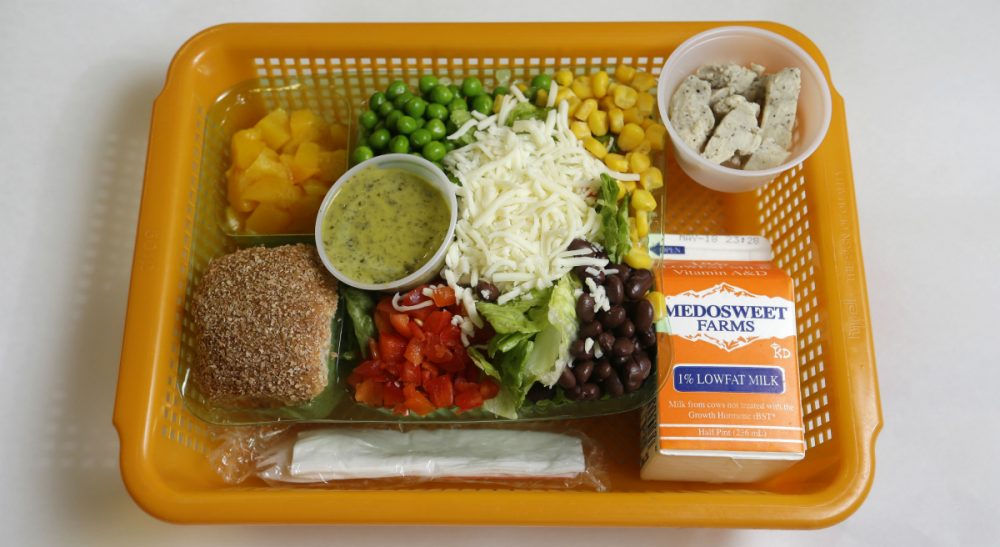Advertisement
A Better Way To End Hunger In America

Hunger affects more than 49 million people in this country. That means one in six people in the United States does not know where their next meal will come from, including one in five children.
There is enough food to feed our country, and we are throwing away more than 40 percent of it. That’s enough to fill the Rose Bowl stadium every day.
Hunger plays a pivotal role in perpetuating the cycle of poverty in the U. S., weakening families and systemically impairing the country's collective ability to reach its full potential. Hungry children have a harder time playing, engaging and learning and are, therefore, less likely to become productive adults. Traditional food assistance has come from preservative- and salt-laden cans and bags and can lead to both short- and long-term health problems: juvenile diabetes, obesity and heart disease. Both children and seniors are particularly vulnerable in this regard. And considering that the young and the old make up the United States’ fastest growing populations, we are woefully under-prepared to meet their urgent need.
Over the last 30 years, hunger has reached epidemic status. In 1980, there were approximately 200 food banks in America. Today, there are more than 40,000 well-meaning organizations that are trying to stamp out hunger. But the focus of these organizations and of the hunger relief community is wrong. Traditional hunger relief models send mostly heavily-processed, shelf-stable foods to food pantries and food banks. As a result, the people relying on this kind of assistance aren’t receiving the healthy, fresh food that will help them thrive.
Getting fresh, healthy food to the hungry is not a question of a lack of resources. As a country, we produce 430 billion pounds of food annually, enough to feed nearly 400 million people. The population of the United States is not quite 319 million. There is enough food to feed our country, and we are throwing away more than 40 percent of it. That’s enough to fill the Rose Bowl stadium every day.
The problem that our country has not been able to solve is how to effectively distribute our food. It’s both a question and an answer of access. Anti-hunger organizations in the United States are growing to be massive, multi-million dollar agencies that often are completely isolated from the communities they serve.
In the 1960s and early 1970s, the federal government raised spending on initiatives to eradicate Third World-style hunger here at home by 500 percent. Programs including food stamps (free to needy families for the first time), Head Start, school lunch and breakfast programs, WIC and others provided increased, easier and earlier access to the essentials for those in need. We made great strides in reducing hunger as a nation before cuts in the late 1970s and early 1980s shifted the onus of hunger relief from the government to private charities. Since then, hunger in America has grown exponentially, much like the charities trying to alleviate it.
Charitable giving is an important part of hunger relief, but organizations are raising millions and millions of dollars to meet higher budgeting goals, while millions of Americans continue to go hungry.
Charitable giving is an important part of hunger relief, but organizations are raising millions and millions of dollars to meet higher budgeting goals, while millions of Americans continue to go hungry. Efficiency and outcomes haven’t improved in proportion to raised capital. Hunger doesn’t require expensive scientific analysis, vaccines or cures. It requires connecting existing resources to people that need it. We have to ask: Are we funding a solution to hunger, or simply a stop-gap measure?
The question applies to hunger on the global scale, as well. The current narrative about insufficient food supplies to feed the world’s burgeoning population fails to acknowledge that one-third of the global food supply winds up in landfills. Globally as locally, then, ending modern hunger means thinking about the problem differently. It’s not that there isn’t enough food; it’s that not enough people are getting it.
We need to rescue food before it winds up as trash, and we need to make sure that it reaches those who most need it. It’s a relatively inexpensive solution that simultaneously addresses the financial, environmental and health costs and consequences of wasting food. In addition, we can no longer talk about hunger relief without also addressing the politics around food. We need to advocate for more jobs, a true living wage and better federal nutrition programs to truly end the epidemic. We need a long view that meets hunger exactly where it is right now.
This is the most solvable problem we’ll have in our lifetime. Food is a right, not a privilege. And we can do better.
Related:
